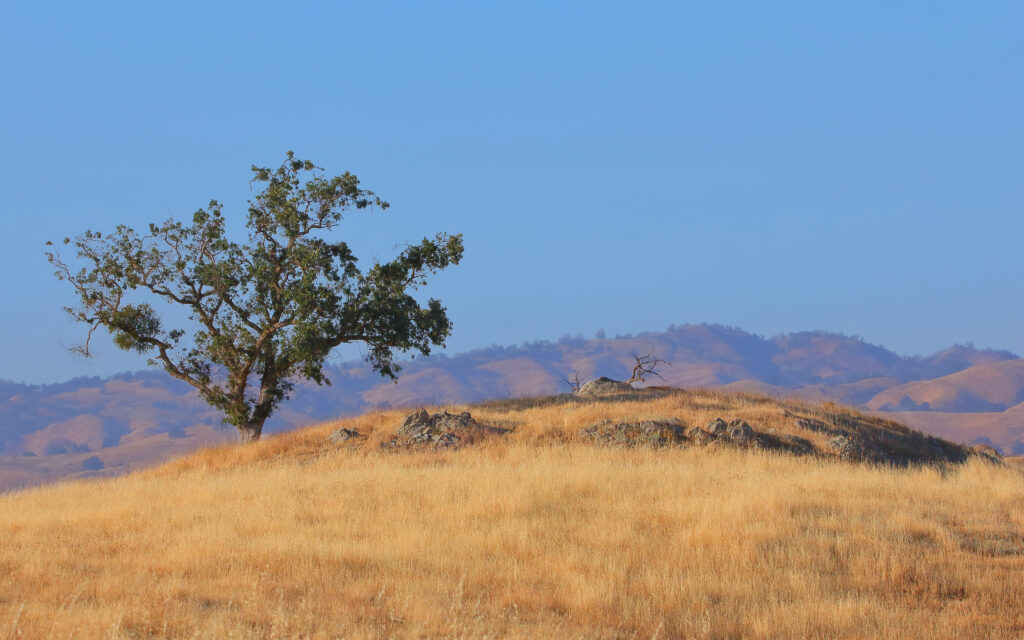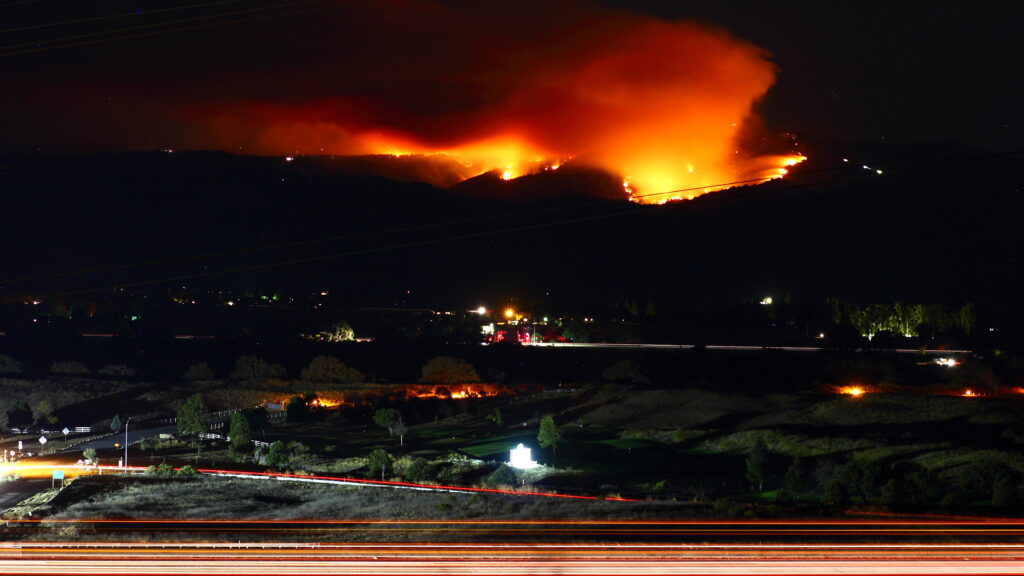
SCCLCV’s Environmental Sustainability Principles for Local Governments is intended to provide general guidance to local governments in thinking about, preparing for, and taking effective actions to meet the significant challenges that are rapidly beginning to affect our environment and our lives. Download the document or browse by chapter below.
Our planet and our local environments face very serious challenges, perhaps the greatest in our lifetimes. How well we meet these challenges will affect our environmental, economic, and social well-being, both in the short term and for generations to come. It is important therefore that we take these challenges seriously and do all that we can to address them responsibly. Local governments – through the actions and decisions of their elected and appointed leaders and staff – can play important roles in meeting these challenges.
Introduction to Environmental Principles
The Environmental Importance of Local Government Decisions
The importance of local government decisions to protecting and enhancing our environment cannot be overemphasized. Local governments impact our environment – for better or for worse – in a multitude of ways through their plans, policies, decisions, programs, projects, ordinances and regulations, services, facilities, fees, purchases, etc. Local governments also impact the environment through the decisions their representatives make while serving on regional and subregional agencies or organizations, and through the state and federal legislation they sometimes choose to support or oppose.
Environmental Principles to Guide Local Government Decision Making
Recognizing the many important roles that local governments can play in protecting and enhancing our environment, the Santa Clara County League of Conservation Voters (SCCLCV) was officially created in 1995 with the goal of promoting environmentally-responsible local government decisions, primarily by endorsing and supporting candidates for local government office who have demonstrated a commitment to the environment.
Although considerable progress has been made over the years since SCCLCV was created, our environment today faces new, and potentially more serious, challenges that demand greater attention and bolder, more innovative action by local governments.
Consequently, the Santa Clara County League of Conservation Voters has prepared these “Environmental Sustainability Principles” as an additional means of promoting environmentally-responsible decisions by local governments in Santa Clara County.
It is our hope that they will stimulate thought, dialogue and – most importantly – actions that will simultaneously contribute to the preservation and enhancement of our quality of life, our social well being, the vitality of our economy, and the health of our environment in Santa Clara County now and in the future.

Think Globally and Regionally, Act Locally
Local Actions Can Have Larger Consequences
We live in an interconnected world, in which local decisions can, cumulatively, have regional and global consequences – for better or for worse.
The cumulative impacts of the many individual planning and development decisions by the fifteen cities in Santa Clara County, for example, have resulted in a serious shortage of housing for our growing population and the workforce attracted to employment opportunities in “Silicon Valley.” This has pushed housing development onto farmlands and other open space lands in nearby and not so nearby counties, resulting in long distance commuting that contributes to air pollution, water pollution, global warming, and continued dependency on foreign oil.
All communities have obligations to make decisions that contribute responsibly to meeting the needs of our region, state, nation, and planet – and to providing leadership in addressing problems that extend beyond their individual boundaries.

Act Responsibly for a Better Future
The Present is Borrowed from the Future
Decisions we make today will affect our children, our grandchildren, and future generations. We owe it to ourselves and to all of them to make decisions today that take into account long term consequences and create a better future.
Positive, Long Term Visions Mark the Path to a Better Future
Adapting to new environmental, economic, and social conditions will require many changes, including changes in our urban development plans and policies. These changes should be guided by formally-adopted, long term, community visions that are developed with broad community participation, based on long term sustainability, and acknowledging the community’s obligations to meeting the long term needs of our region, state, nation, and planet.
In Santa Clara County, for example, we now enjoy and take for granted an extensive public system of streamside and Bayside trails and pathways, most of which did not exist thirty years ago. The creation of this system seemed like an impossible dream three decades ago, due to the formidable combination of physical, financial, and political obstacles it faced. But through the development and adoption of a visionary countywide Trails and Pathways Master Plan that established the blueprint for today’s countywide trail system, the successful long term effort to create the system we have today was set in motion.

Enhance and Protect Our Natural and Built Environment
The Fate of Natural and Built Environments are Inseparable
Historically, there has been a tendency to view the natural environment and the built environment as being separate and distinct entities. Environmentalism in the 21st Century understands that the two are very much interrelated – as are their fates.
Protecting and enhancing our natural environment will depend to a very large extent on our ability to create livable, diverse, higher density, mixed use, urban neighborhoods and will require leadership, vision, planning, community involvement, and ongoing commitment.
Incorporating natural environmental values into the built environment can also improve the quality of life and benefit nearby, more natural areas.
Sustainability Involves The Environment, The Economy, and Social Equity
Enlightened 21st Century environmentalism recognizes that the health of our environment, the health of our economy, and the health of our society are inextricably interrelated. As a consequence, government, community, and environmental leaders need to promote solutions to our problems that acknowledge, address, and seek to balance responsibly all three components of sustainability (i.e. environment, economy, and social equity – sometimes referred to as “The Triple Bottom Line”).
For example, by allowing more affordable, higher density, mixed-use, energy- and water-efficient housing constructed with sustainable materials to be built in walkable and transit-oriented neighborhoods, local governments can help to provide much needed housing for people of all ages and incomes, contribute to our local economy, and combat global warming, all at the same time.
Maintaining the Status Quo is Not an Option
Major environmental, economic, demographic, and technological changes are occurring that will significantly affect our lives and those of future generations. We need to acknowledge and prepare for these changes forthrightly and responsibly, even though they may require changes from the status quo. Failure to plan for change will not prevent unplanned change from happening.
Planning Responsibly for Growth is Essential
Our country’s, state’s, and region’s populations are all projected to grow significantly over the coming decades. Communities have an obligation to plan for future population growth in appropriate locations within their boundaries.
Accommodating future population growth in ways that protect our environment will inevitably require that we create higher density, transit-oriented, mixed use urban neighborhoods in appropriate locations within our existing communities. Local officials and community leaders have an obligation to provide leadership and vision in creating livable, vibrant, urban neighborhoods in their communities.

Housing is an Important Environmental Issue
The decisions we make about how and where we house our future population in the 21st Century will greatly impact virtually every aspect of our environment, including: global warming, air and water quality; energy consumption; water usage; loss of agricultural lands, open space, and wildlife habitat; waste generation; forest conservation, etc.Local officials and community leaders need to promote public awareness of this critical link between our housing policies and the well-being of our natural environment. Efforts to meet our current and future housing needs should take place within a framework of “smart growth” that protects our natural environment and directs development into appropriate locations primarily within existing urban areas.
The balance and location of jobs and housing, both in the broader region and at the level of specific local jurisdictions, will strongly affect the environment, in part by reducing commute distances.
Need for More Alternatives to the Automobile
In a country experiencing global warming, rising energy costs, an aging population, and increasing health concerns related to lack of physical activity, providing convenient, safe, and efficient mobility alternatives that reduce dependence on the automobile needs to be a high priority.
Land Use Determines Mobility Options
Providing mobility alternatives that reduce dependency on the automobile can provide important environmental, economic, and social benefits. Local leaders need to promote development of land use patterns, public facilities, and programs that increase our mobility options by supporting walkability, bicycling, and transit usage.
Preservation is Not Enough
As our population and our urban areas continue to grow, preservation of natural areas and natural resource systems will be increasingly more important. But, since many of these areas have already been fragmented and degraded by development, other human activities, and invasive species, it will also be necessary to focus substantial efforts on restoring, enhancing, expanding, and linking these areas to improve their ability to perform their natural functions.
Sustainability Requires Efficient and Responsible Resource Use
We have an obligation to future generations to meet our needs without compromising their ability to meet theirs. To fulfill this obligation, we must find ways to bring our individual and collective resource consumption rates into balance with our planet’s ongoing ability to replace these resources.
Lasting Community Support is Critical
Making our communities more sustainable over the long term will require broad and lasting public support. Consequently, it will be important to develop local public policies in ways that are broadly inclusive and produce solutions that are likely to maintain long term support.
A Responsible Sense of Urgency is Needed
Many of the challenges we are likely to face in the coming decades will require significant changes in our current land use plans and policies. The longer we put off making these changes and taking other necessary actions, the more severe may be the adjustments required in the future.
Consequently, it is important that today’s leaders act with a responsible sense of urgency to take the actions needed to achieve a better future for current generations – and generations yet to come.
Bold Visions and Collaborative Leadership Will Be Required
The magnitude of the environmental, social, and economic challenges we will be facing in the years ahead will require more than just modest plans and minor incremental changes.
Bold, imaginative visions, implemented by bold, inclusive leaders who can rally and motivate diverse community constituencies will be required.
